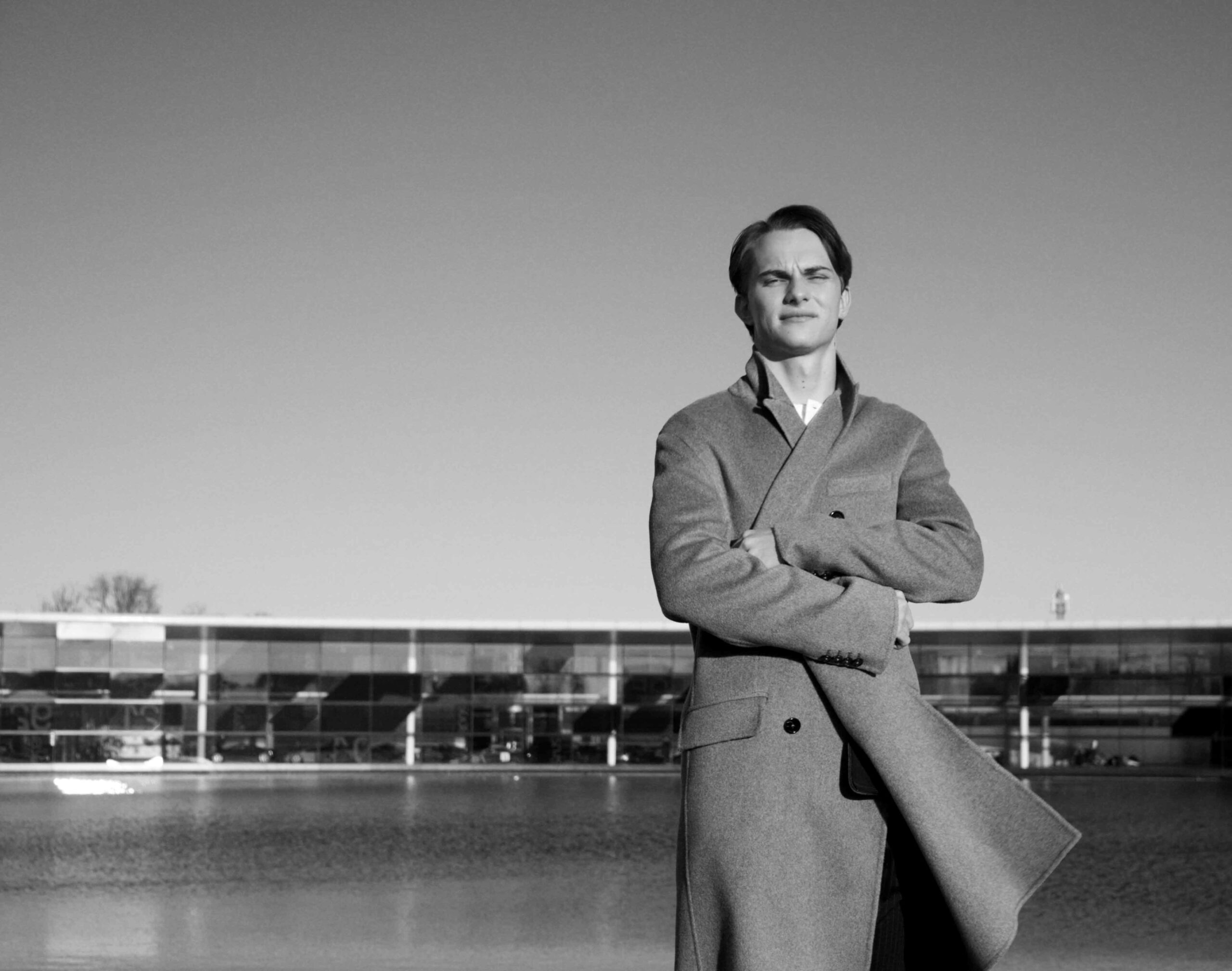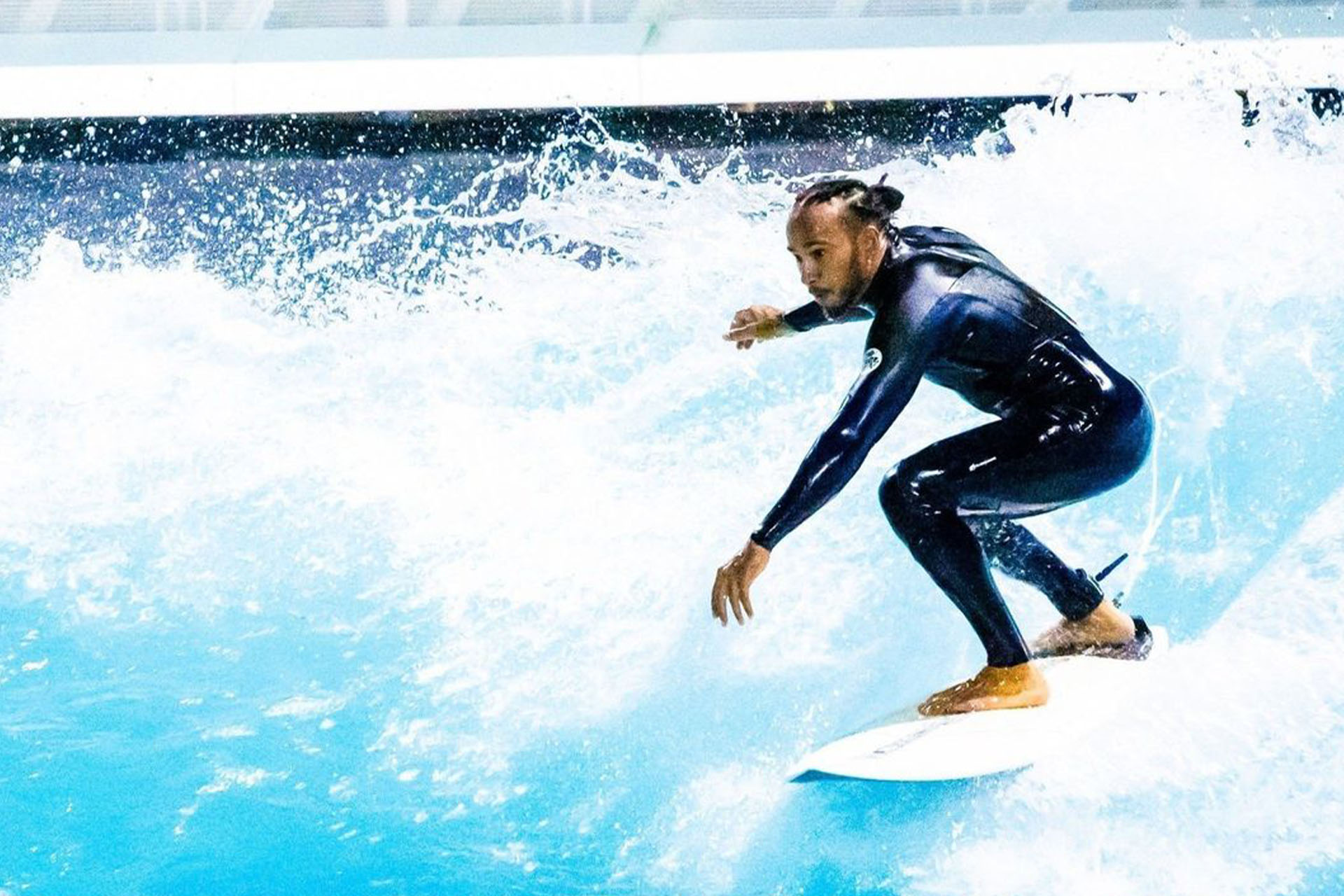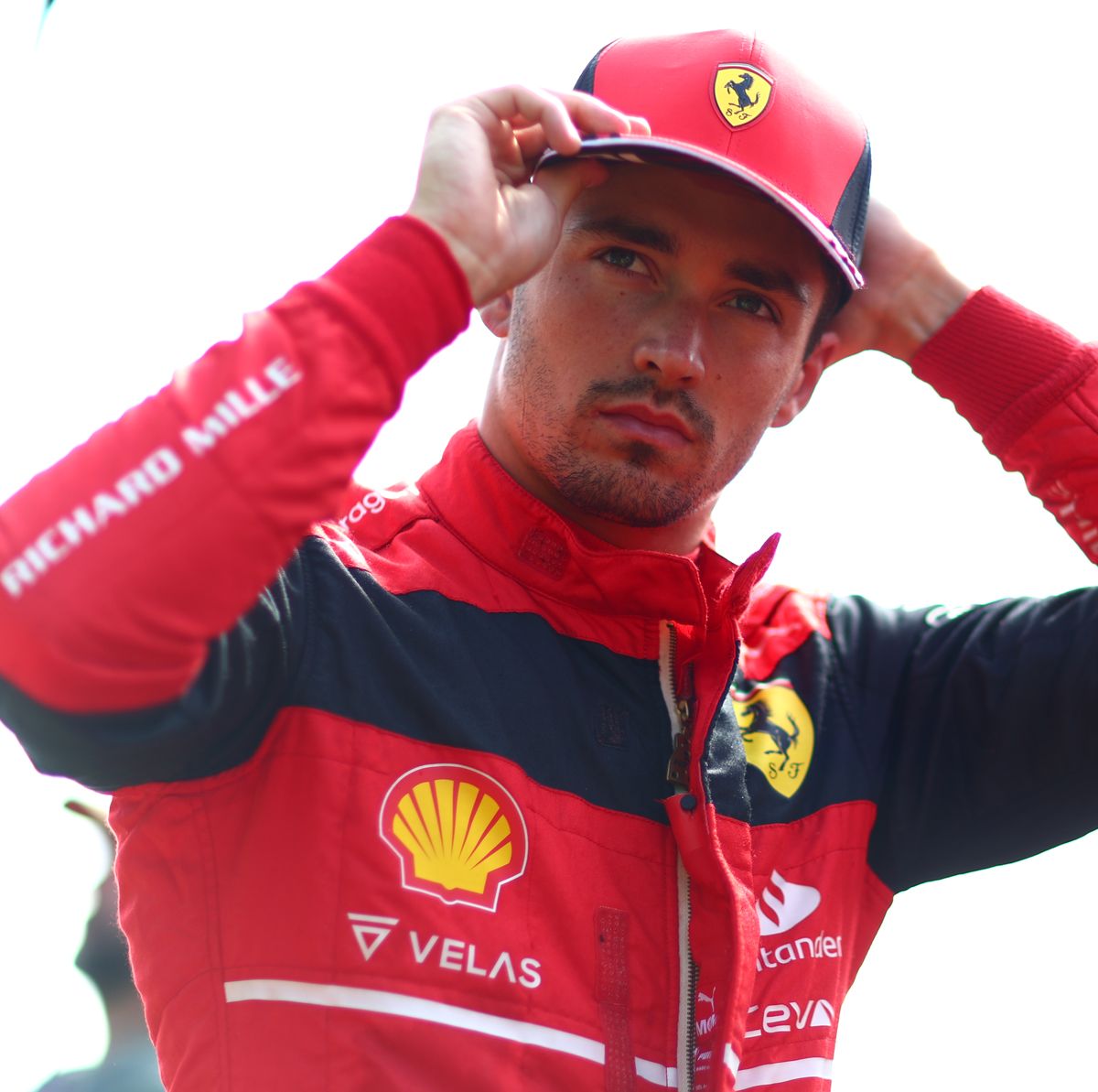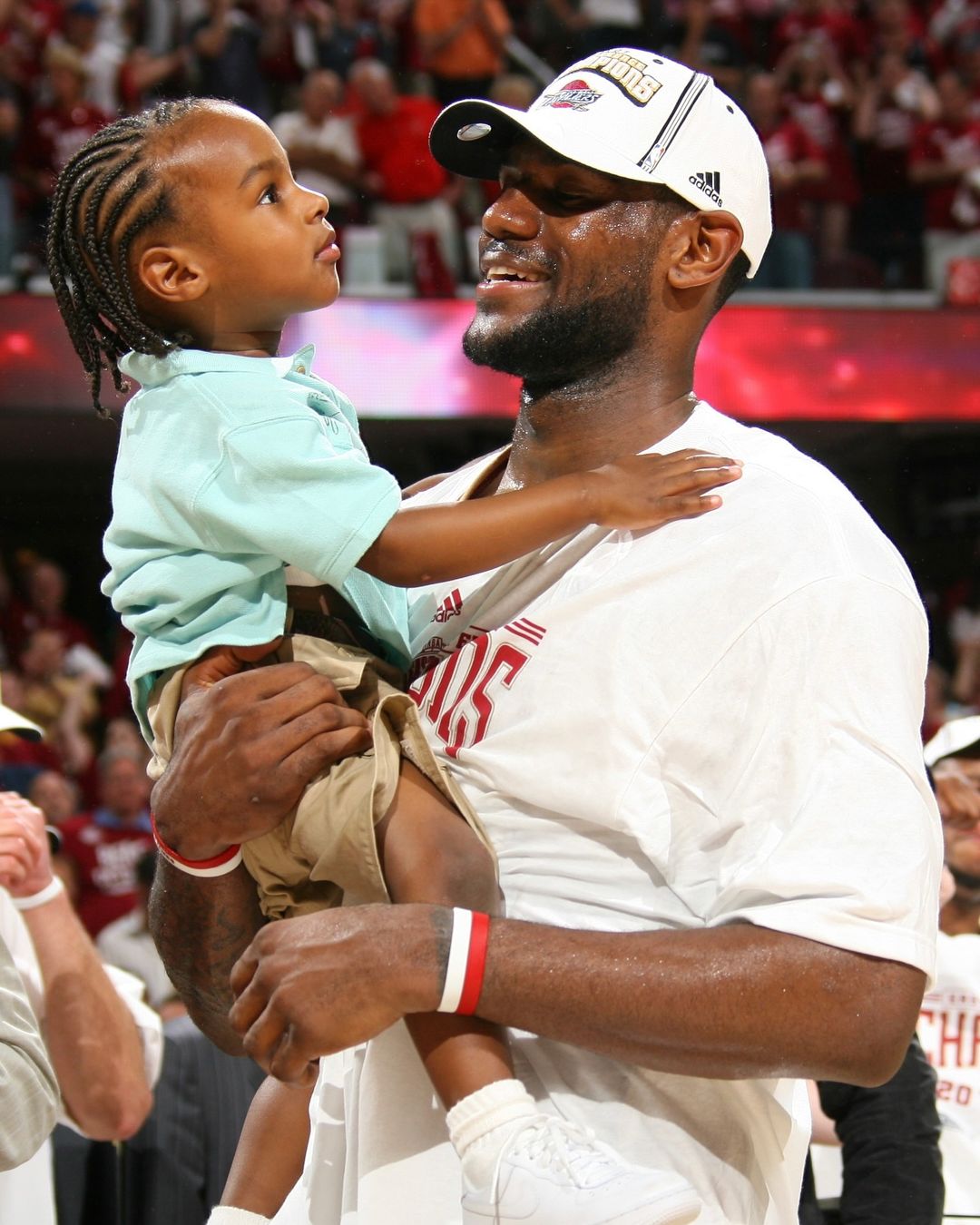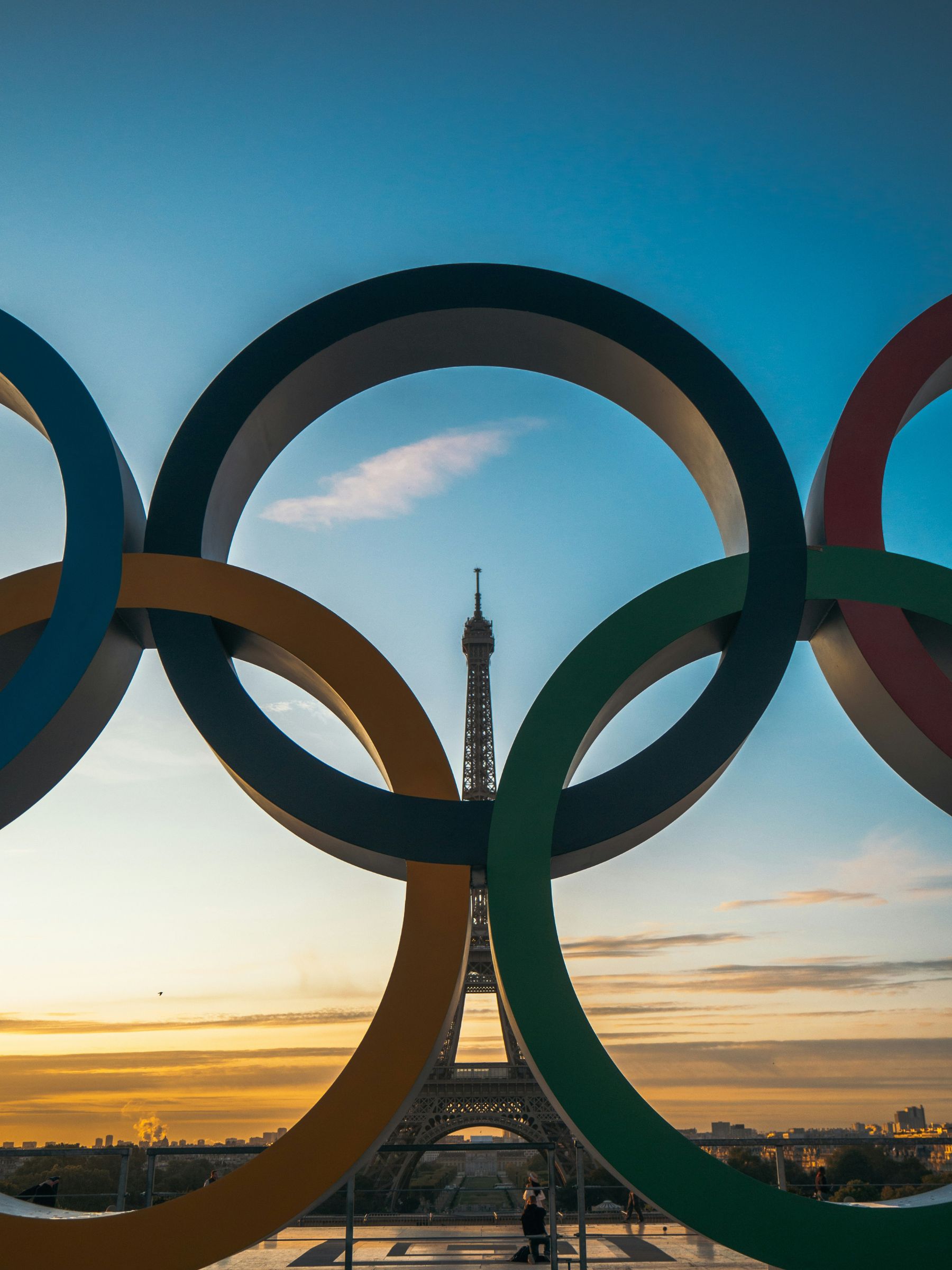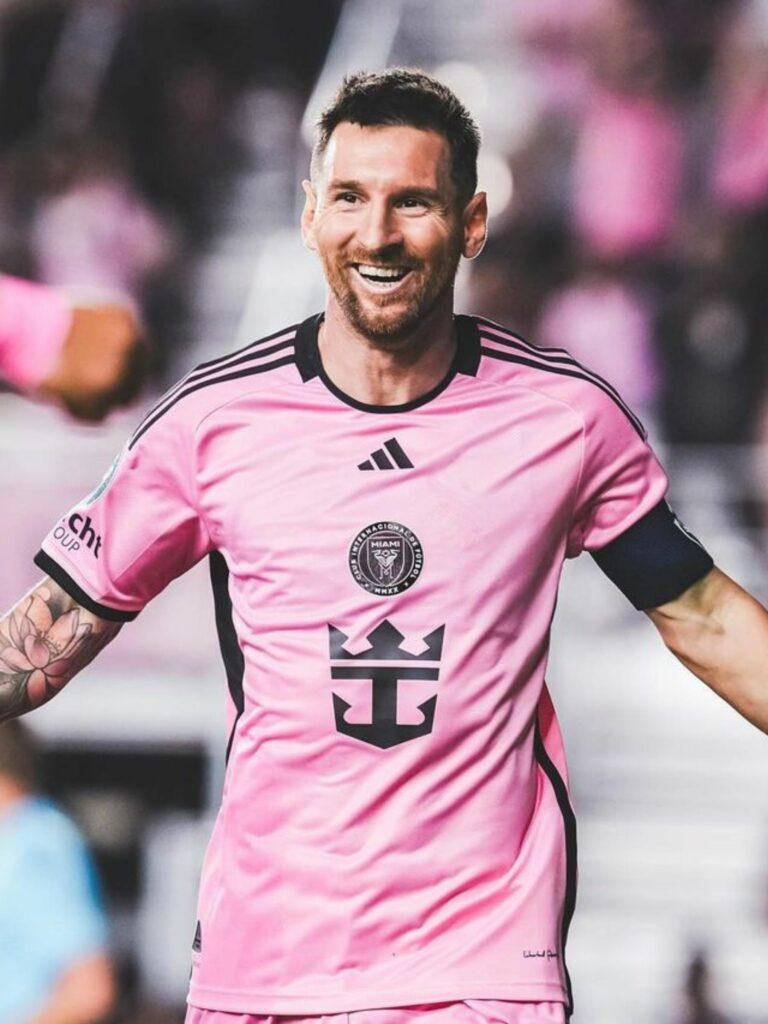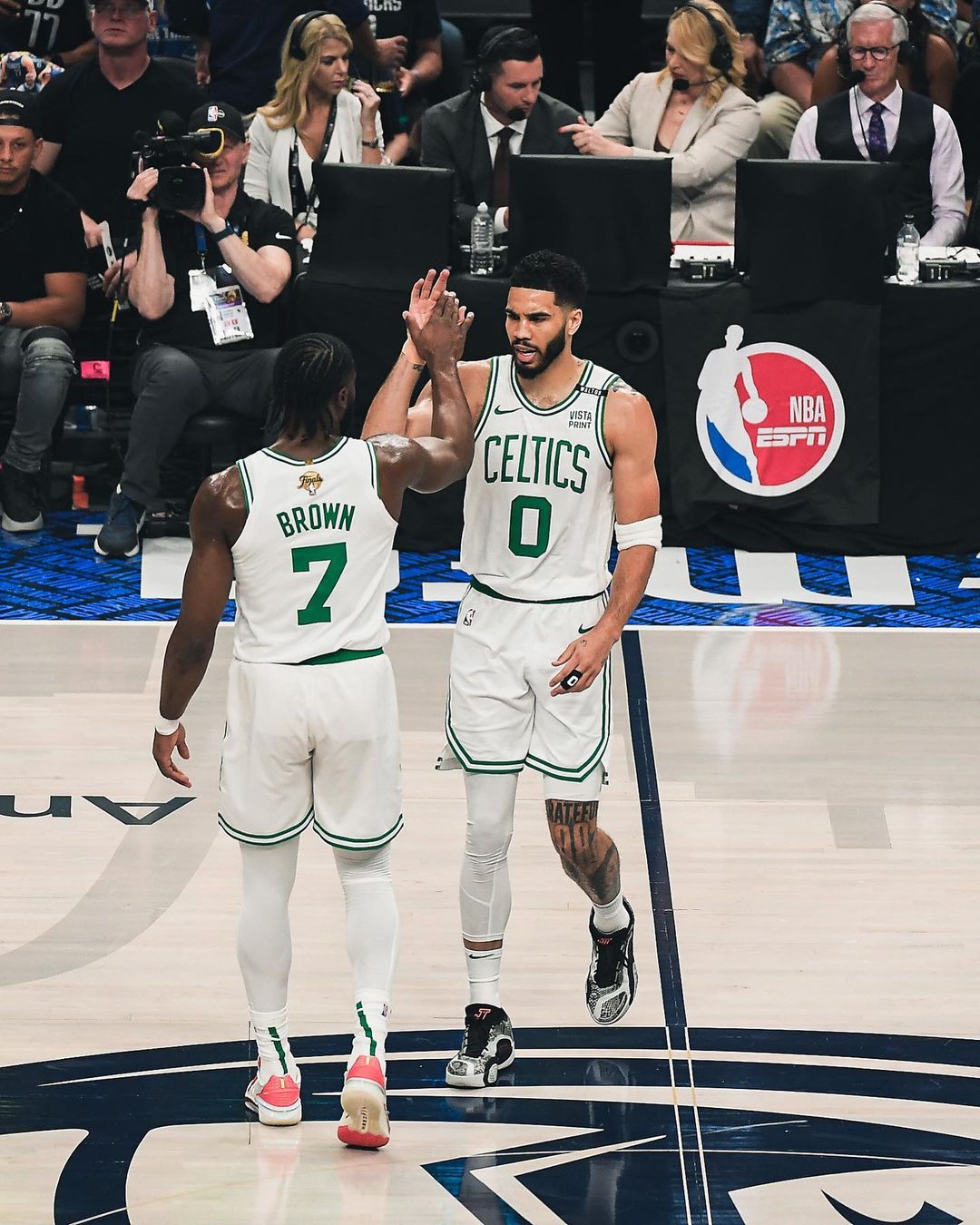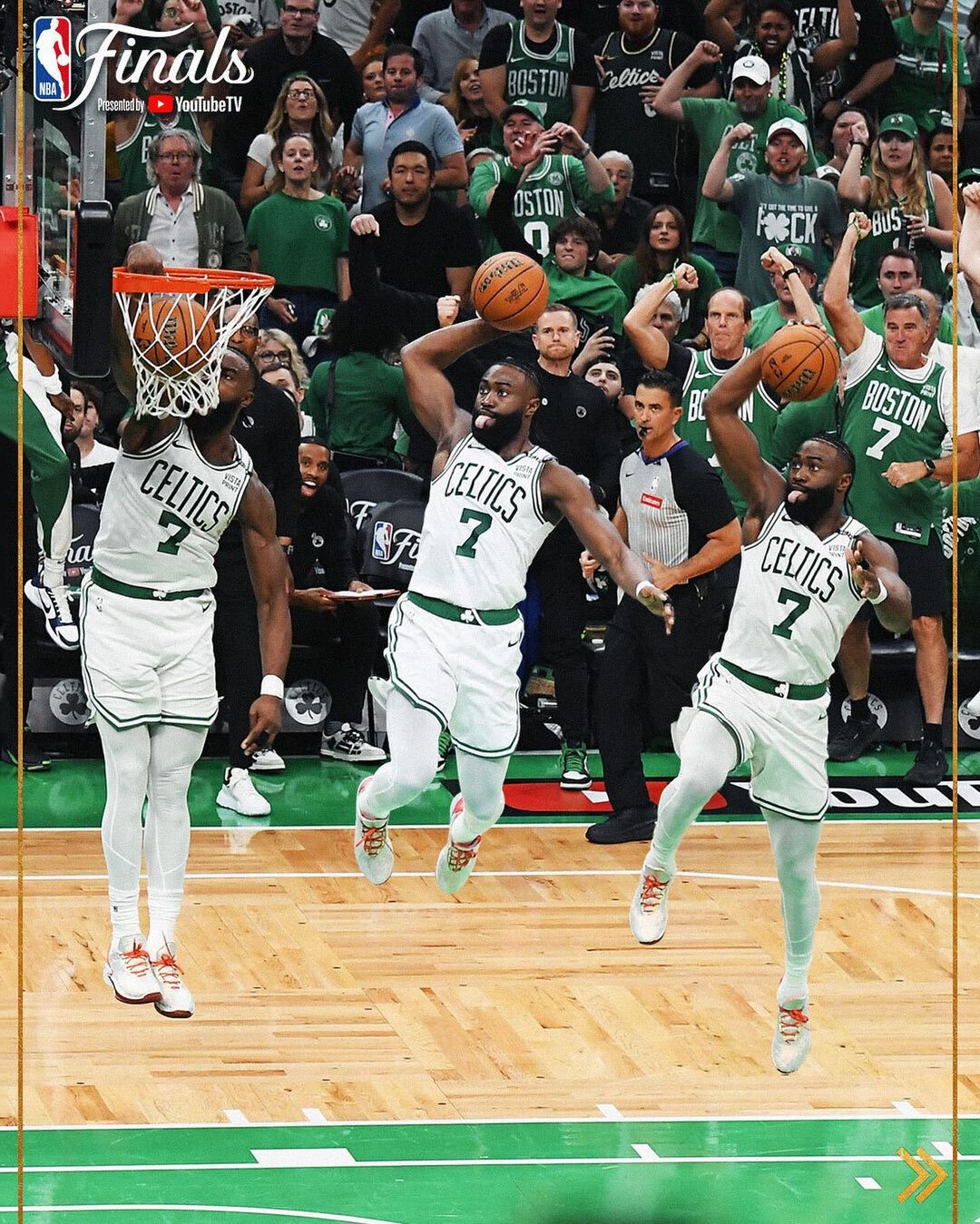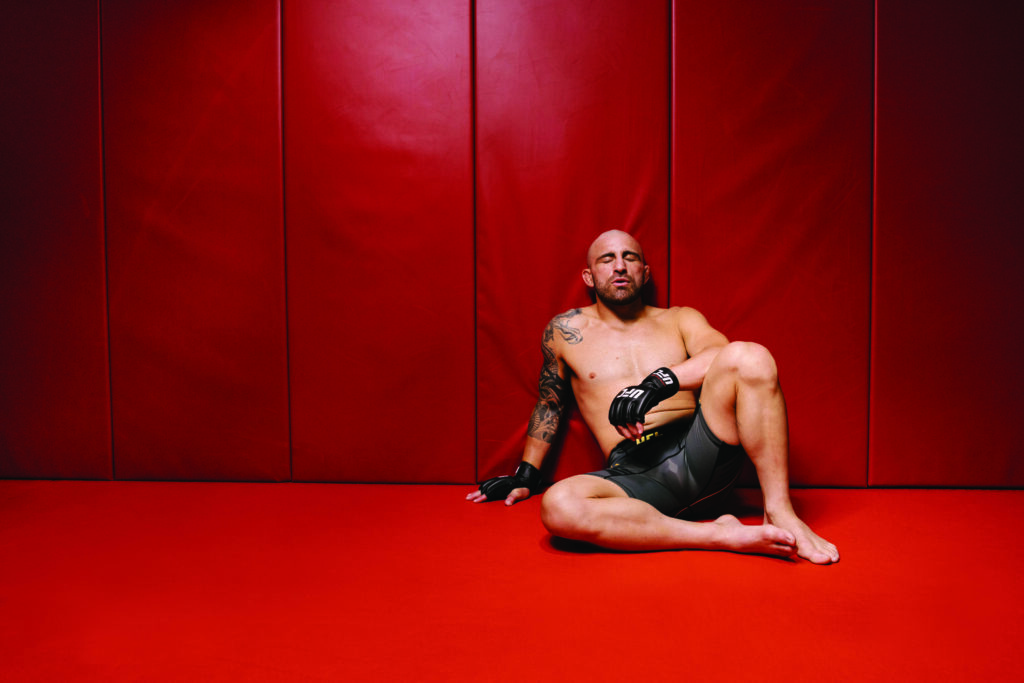
LONG BEFORE he became the UFC middleweight champion of the world, Israel Adesanya had anointed himself in his mind’s eye. The Nigerian-Kiwi fighter saw himself wearing the championship belt, felt its weight around his waist and admired the way the gold badge glittered under the bright lights of the arena. He saw his destiny.
Visualisation is common practice among fighters, one that gets dialled up during a pre-bout fight camp. But Adesanya took it a step further, something he’s apt to do, according to those who know him at the famed City Kickboxing Gym in Auckland – an impression confirmed by David Niethe, a mental performance coach who’s worked closely with the fighter over the years.
Back in 2016, before he’d joined the UFC, Adesanya was living with his striking coach Mike Angove. One day the trainer came home to find Adesanya in his bedroom staring at a vision board, which featured a picture of himself with one important modification. The picture had been digitally altered so that Adesanya was wearing the UFC championship belt.
As Angove watched on, Adesanya continued to stare at the picture while repeating over and over, “I’m the UFC middleweight champion of the world”. Adesanya, of course, would become a two- time middleweight champion, and if the story sounds heavy on the familiar tropes of sporting myth making, it’s also one that underscores the mental commitment, or what Niethe calls “tenacious resolve”, required to make it to the top in a brutally competitive sport.
The truth is, in combat sports, a belief in manifest destiny is at least half the battle. Adesanya had it right from the start. “He’s the definition of someone who manifests, visualises and creates his own narrative,” says Angove, who emphasises that the scene he witnessed was not an isolated incident.
So, how does visualisation work? How does a fighter’s self-belief become a behavioural building block that finds expression in the cage? “The subconscious mind has no idea of reality or time,” says Niethe, a bald, goateed Kiwi with a colourful vocabulary and plain-speaking manner, who operates out of a converted garage in Auckland.
“So, what I get these guys to do is to start the visualisation with the end in mind. So that’s what Izzy did. He does everything to the nth degree. He builds in sensory details. The principle here is any thought that you consistently hold in your mind will soon seek expression through some practical means. Izzy had a clear vision.”
Niethe, a former competitive powerlifter, who’s also worked with Australian fighter Tyson Pedro and fellow City Kickboxing alumnus Kai Kara-France, has been helping elite athletes mentally prepare themselves for competition in sports ranging from golf to rugby league for 30 years. His methods are similar regardless of the athletic endeavour, though he believes fighters respond to him because he doesn’t “blow smoke up your ass”.
When fighters begin a camp at City Kickboxing, many will visit Niethe’s garage for what will be a no-holds-barred exploration of their psyche. Many will be challenged by it. Most will leave transformed.
“I truly believe that the mind controls the body, not the other way around,” says the 55-year-old. “Now, there’ll be plenty who will argue otherwise, right? And I get that. But hey, I don’t give a shit. I think what I do is the absolute cornerstone [of a fighter’s preparation].”
That may be so, but arming a fighter psychologically for a bout is, at the very least, complemented by meticulous, often granular physical work. Indeed, physical conditioning and mental fortification work hand in glove to ensure a fighter enters the cage combat ready.
“I will push myself mentally through physical work,” says Alex Volkanovski, former UFC featherweight champion and arguably the division’s GOAT, who when I speak to him is three weeks out from his fight against Georgian-Spanish warrior Ilia Topuria.
“Some of the sessions we do, you go to breaking point. I put myself in that position in the gym every single day. I’m tired, but I deal with that fatigue, that pain – and that really does help with the mental side of things. “That’s why I always say fighting’s the fun part. Preparation is really what breaks people.”
If it doesn’t break you, what does it make you? Well, if all goes according to plan, an admittedly fragile concept in combat sports, you become what you pictured in your mind’s eye, what you trained your body to achieve and what you’ve been telling yourself you are for weeks, months and, in some cases, years: someone with a belt around your waist.
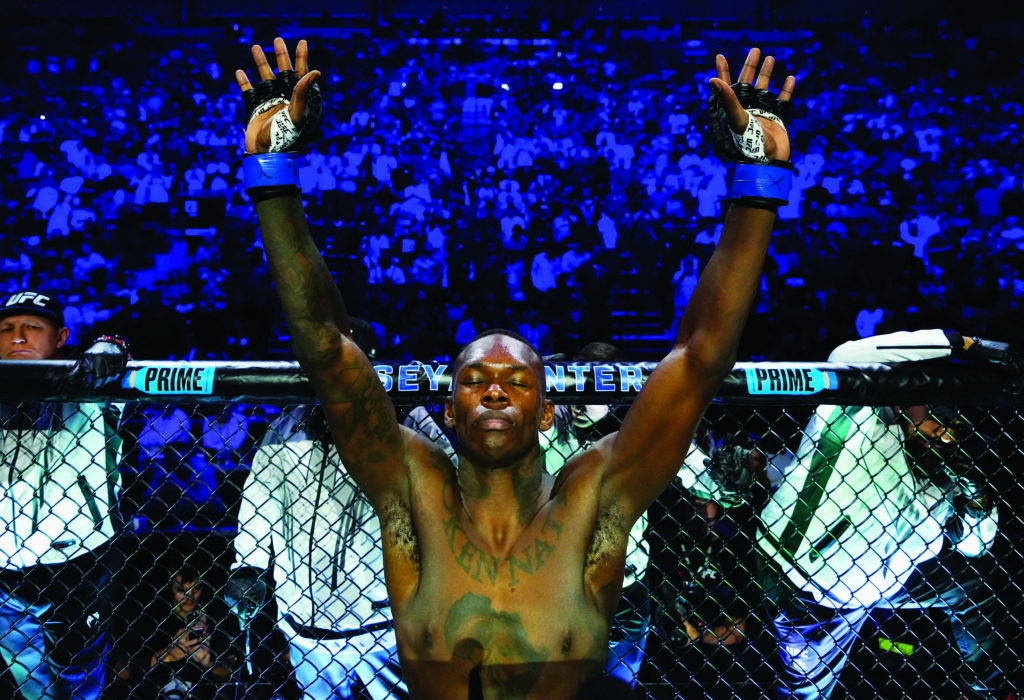
IF YOU’VE EVER seen one of Adesanya’s entrances to the Octagon, you’ll know it’s one of the most arresting scenes in all of sports. At UFC 243 in Melbourne in 2019, for example, upon entering the arena, the middleweight huddles with his crew before launching into a synchronised dance routine in which he simulates a doubled-fisted machine gun blast before executing a one-handed cartwheel. Next, he pretends to pull on a glove, as he reaches towards the heavens, before beckoning at his opponent in a way that recalls Jean-Claude Van Damme.
It sent the Melbourne crowd into hysterics. But here’s the thing. The man executing these carefully choreographed moves is not Israel Adesanya per se, it’s The Last Stylebender, Adesanya’s alter ego, a manifestation of his perfect self.
Stylebender, a reference to Avatar: The Last Airbender, an anime TV series, is something the fighter had developed and Niethe helped further unlock, when they first started working together back in October 2015.
“During that conversation, his whole physiology changed when he started talking about Stylebender and so I wanted to tap into that physiology,” Niethe says. Pedro, who recently retired from the UFC to take up boxing, was similarly drawn to the rōnin, a samurai without a master.
As a manifestation of the supreme self, the alter ego, Niethe says, is a mix of visualisation and Nietzsche’s concept of the Übermensch. It’s an aspirational yet authentic persona, free of doubt, uncertainty, fear or what Niethe refers to as “contaminants”.
“As a human being, you’re always going to have some level of doubt or the potential for contamination,” he says. “But the whole idea of the alter ego is that they are incredibly flawless, they are fearless, they are the ultimate being.”
To tap into a fighter’s alter ego, Niethe draws on aspects of their personality and values system that might serve them. “The whole idea of the alter ego is not something that they question,” he says. “It’s something they already have some sense of. It’s just they’ve never worked with anyone that’s really gone, ‘Hey, how do we develop this?’”
Not only does the alter ego need to be aspirational, it should also be impregnable, impervious to external circumstances and even to outcomes, such as winning and losing. “You’ve got to appreciate, these guys understand the fight game,” Niethe says. “You are not going to win every fight but that doesn’t mean that the psychology suddenly collapses. Are you serious? For these fighters, they see it as fuel to fucking get back up. Nothing changes. Nothing dramatic has to change.”
The fighter who enters the ring with this transcendent level of self-belief is equipped to pull off feats that are beyond them physically, Niethe believes. “How many women can deal with 300kg?” he asks me rhetorically. “Not a hell of a lot. But you put a child under a car, that mother will rip that damn car up. So, I’m interested in how far we can take human performance to a place that is beyond a level of self-imposed limitation.”
At this point it feels prudent to ask Niethe about the limits of visualisation and the much derided new-age practice of manifestation. Not surprisingly, he bristles at the comparison.
“Intention and attention need to align,” he says. “When they’re aligned, truly aligned, they [fighters] get this part, which is that we behave our way to success. We don’t just fucking think it. You’ve got to do the fucking work. The other underlying thing here is what’s done in the dark will shine in the light.”
He cites the story of Mike Tyson’s first trainer and manager, Cus D’Amato, telling his young prospect to run five miles [eight kilometres] at 4am each morning. “Tyson asked Cus, ‘Why? No other heavyweight’s doing it’,” says Niethe. “And Cus just said, ‘Yes’.” Niethe pauses and I can’t help noticing the tenor of his speech has hit a new plane of intensity. “Now, you’ve got to think about that. ‘Yes’. Because no other motherfucker was doing it.”
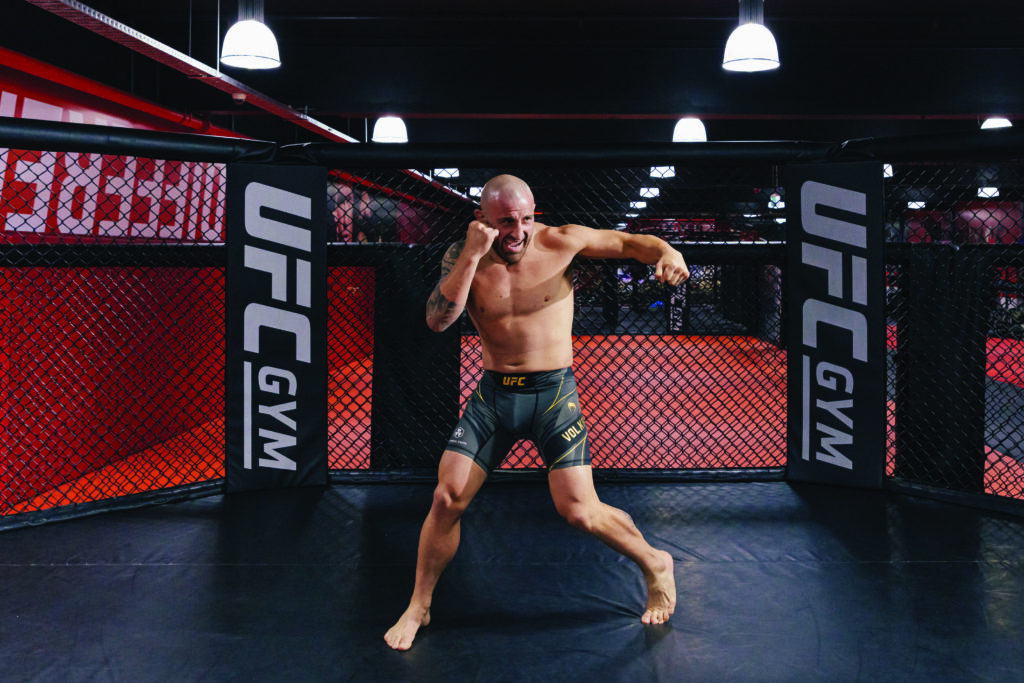
IN THE FOURTH round of Volkanovski’s second featherweight title defence against American Brian Ortega at UFC 266 in September 2021, it looked like the Wollongong warrior’s reign was about to come to an end. The fighter found himself trapped in a guillotine chokehold, one of the most lethal moves in MMA. For most fighters there’s no escaping a guillotine, not because they lack the physical strength to endure it, but because their mental resolve peters out first.
Somehow, Volkanovski would manage to escape multiple submission holds by Ortega, a jiu-jitsu specialist, in what would become a legacy-defining fight. His escape was a feat, the 35-year-old says, built entirely on the work he put in during his pre-fight camp. “The guy that got out of that Ortega guillotine, that is preparation,” says Volkanovski. “I ain’t the most athletically gifted person. It’s literally just my commitment, my discipline, that work ethic that’s got me to where I am. That’s why I always make sure I’m putting in the work.”
Training under his long-time coach Joe Lopez, at Freestyle MMA in Wollongong, that work usually consists of an eight-week camp with three sessions a day: strength at 7am, sparring at 8:30am and a technical session at 4pm.
As soon as a match-up is announced, Lopez will begin assembling his team. “I start looking for good sparring partners,” says Lopez, who began training Volkanovski 11 years ago. “I start watching tape and then discussing it with the other coaches, looking at what he [the opponent] does right, what he does wrong . . . and then discussing how we can attack those weaknesses and what he’s going to attack us with and staying on top of that.”
He cites Volkanovski’s pair of fights with UFC lightweight champion Islam Makhachev to illustrate the tactical prep involved. “He [Makhachev] is good at arm triangles and arm bars, so we drilled those attacks and those finishes,” says Lopez. “Ilia [Topuria] likes his arm triangle so we didn’t have to change much. We just revised it. Alex is very confident in his escapes, but we still drill it.”
By drilling, Lopez is referring to the notorious ‘meat grinder’ sessions that he puts his fighter through. When I speak to Volkanovski, he’s completed one that morning. “You’ve got my coach on pads, you’ve got my wrestling coach, you’ve got a grappler, and you’ve got someone sparring,” he says. “I do five-minute rounds, but I get a fresh guy every 30 seconds, and they’re just meant to put it on me. It’s meant to be a very, very hard grinding sort of workout.”
The rationale, says Lopez, is to challenge and, by extension, deepen, the fighter’s mental resolve. Lopez has a saying: when your body wants to give up, it’s only your mind that can keep it going. “Everybody looks good when they’re fresh, but I want to get them tired,” he says. “It’s a grindy fight. You’re meant to be in a bad position the whole time and you’ve got to fight your way out of it. And the more you do it, the better your body is going to react under those conditions. You get comfortable at being uncomfortable.”
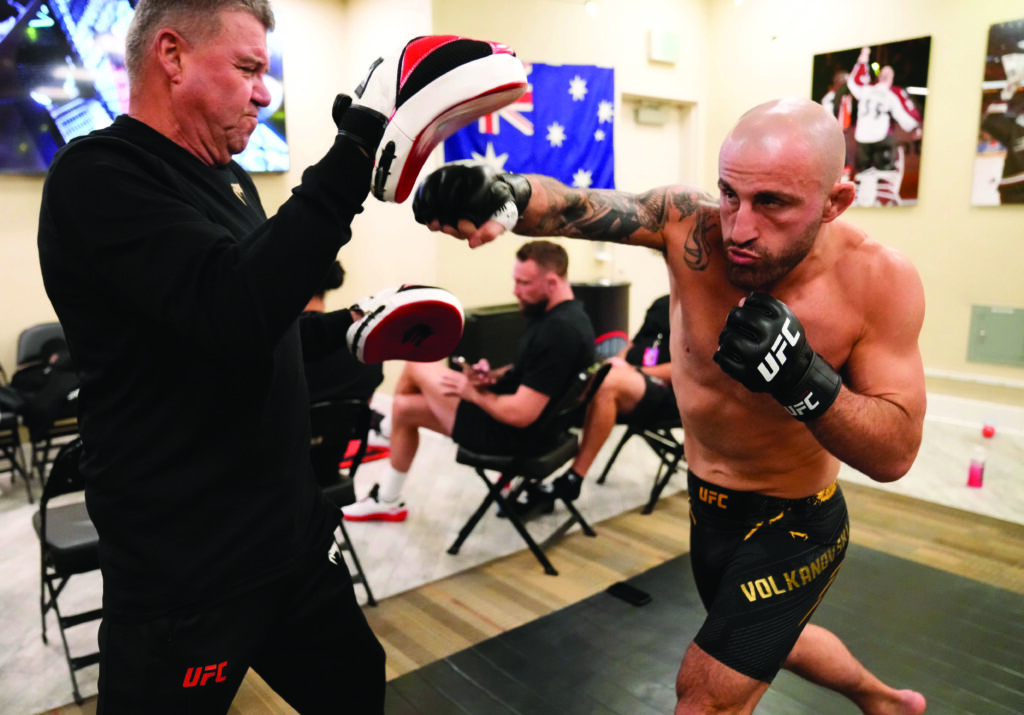
TOGETHER WITH THE pantomime theatrics of the stare down, the other highlight of pre-fight promotions in the UFC is the weigh-in, where the results of camp, at least the outward, physical ones, are there for all to see.
In years past, the process of making weight would see fighters subject themselves to some stomach-churning ‘cuts’, like cocooning their bodies in sauna suits for hours on end in order to sweat out any unwanted kilos. After his recent victory over Volkanovski, Topuria said his pre-weigh-in routine was to drink half a litre of red wine the night before to dehydrate himself, resulting in nearly a kilo of weight loss by the morning.
Lopez says such extreme measures are old-school thinking. These days, he says, if a fighter fuels themselves properly during camp, a drastic cut won’t be required at the end. “The way we generally cut now is through diet,” he says. “A lot of guys, especially back in the old days, would try and lose the weight in water. And a lot of guys still cook their bodies. It’s just bad.”
Some fighters, perhaps concerned about making weight, often need to be encouraged to eat more to fuel their training load, he adds. “A lot of guys start thinking, Oh, I’m going to fight so I’ve got to eat less. A lot of them are scared to have carbs. But there is such a thing as good carbs and your body needs carbs for the brain to work.”
To avoid deficits, Lopez works with a dietitian to devise a diet that can sustain the fighter through the three-session training day. “I tell them [the dietitian], ‘We’re going to do these kind of workouts’. They work out the calories – boom. And sometimes the guys go, ‘I can’t believe I’m eating this much’. But they’re eating more and they’re losing weight, and it gives them enough energy to get them through their workouts.”
After making weight, many fighters in the past looked to stack it back on in the 24 hours ahead of the fight. Again, Lopez believes this approach is outdated. Fighters have an ideal weight, he says. “You’re going to get tired quicker because whether you’re carrying two kilos of muscle, two kilos of water or two kilos of fat, your body’s got to carry it.” Volkanovski, he adds, is at his optimum between 74-76kg. “He’s going to work better at that weight.”
So, how important is camp in preparing a fighter for a bout? Volkanovski is uniquely positioned to answer that question after accepting a rematch with Makhachev on 11 days’ notice at UFC 294 last October. “I thought I could sort of change the situation mentally . . . but I just couldn’t pull the trigger,” he says. I couldn’t do what I usually would do. But that just reminded me, even though I knew, that preparation is everything. You need all that stuff if you want to beat the best.”
I put it to Lopez that camp, when viewed through the rosed-coloured glasses of a successful fight, echoes the bum-to-badass journey embodied by a Rocky or Creed training montage, minus the rousing score. He chuckles. “I probably wouldn’t call it that, but that’s the way the camp actually goes in a sense. Usually, we start camp, and you go, ‘Well, geez. He doesn’t look ready’. But I’ve been there that many times that I know, as it goes on, he’s just getting better and better. And at the end, he’s there.”
Related:
Inside the business of fighting
Men who swear at GOATs: the relentless debate over sporting greats









